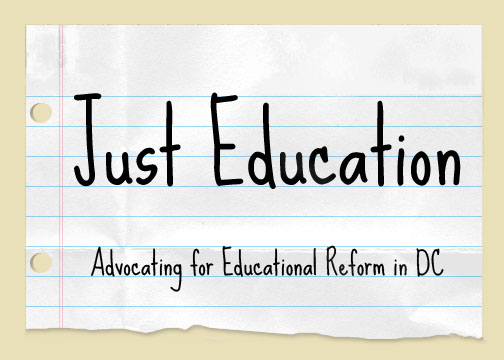
By: Hannah Klusendorf
Since Adrian Fenty's defeat in the DC mayoral primary, there has been much speculation as to the fate of his right-hand woman, Michelle Rhee. After all, she did support Fenty's bid for re-election, and while campaigning for him, she hinted that a victory for Grey would mean resignation for her. It’s no secret that Gray and Rhee have had a pretty rocky relationship in the past. When asked about the possibility of keeping Rhee, Grey responded, "Well, we'll see."
This Wednesday, October 13th, Rhee announced that she would resign as DC Public Schools Chancellor at the end of the month. Gray picked, Kaya Henderson, DC's Deputy Chancellor, as Rhee's interim successor. She first got involved with education reform and policy by working for Teach for America as a middle school Spanish teacher in the Bronx and as the executive director of Teach for America-DC. After her TFA stint, Henderson served Vice-President for Strategic Partnerships in Rhee's The New Teacher Project. She also launched alternative teaching certification programs, including the DC Teaching Fellows Program. Most importantly for all you Georgetown readers, Henderson is a Hoya twice over; she received her undergraduate and master's degrees at Georgetown.
According to Rhee, "She's everything you'd want in a leader. She has the ability to motivate people. She's a critical thinker, and she's an innovative thinker." In light of this glowing praise, why did Gray appoint Henderson, a clear supporter of many Rhee policies? What does Henderson's chancellorship mean for the students of DCPS?
In Henderson, Gray inherits in many ways a mini-Rhee. Both subscribe to the same vision of education reform, chiefly that student success depends most heavily on teacher quality. Henderson was Rhee’s first appointee, and they have been working together for the past decade. In the controversial firing of 98 central office staff members in 2008, Henderson, as deputy chancellor of “human capital,” played an important role. Despite Henderson’s close relationship to Rhee and her policies, Gray and his staff must have seen something in Henderson. Although she successfully negotiated a new labor pact with the Washington Teachers’ Union that bases job security on classroom performance rather than tenure, Henderson maintains a decent relationship with the teachers’ union president, George Parker whose union backed Gray in the primary. Also, according to at least one senior education adviser to Gray, Henderson’s political and presentational skills are stronger than those of Rhee’s.
Whatever the reasons may be for Henderson’s appointment, one must wonder how she fits into Gray’s message of “community engagement and collaboration.” He has said that he “has no intention of micromanaging DCPS,” but how much freedom will Henderson – someone the Gray camp considers to be a permanent chancellor replacement – have to continue with the reforms set in motion by Rhee or even to forge a different path?
According to Henderson, "Our responsibility is to deliver the goods, no matter what the situations our students are in. The reform is in the schoolhouse.” I look forward to watching how she intends on reforming the schoolhouse as the new Chancellor of DCPS.

No comments:
Post a Comment